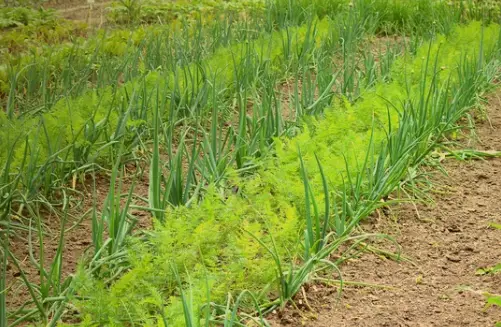When it comes to growing vegetables, have you ever wondered if there’s a secret to boosting yields, repelling pests, and improving soil health?
Well, look no further than companion planting!
This gardening technique involves strategically planting certain vegetables together to create a mutually beneficial environment.
Not only does companion planting maximize your garden’s potential, but it also promotes sustainability and reduces the need for chemical interventions.
In this blog post, we’ll delve into the world of companion planting, exploring various vegetable combinations that thrive together and the reasons behind their success.
What is Companion Planting?
Companion planting is not a new concept; it has been practiced for centuries and has its roots in ancient agricultural traditions.
The idea behind companion planting is that certain plants have the ability to support and enhance the growth of neighboring plants.
This can manifest in various ways, such as improving flavor, attracting beneficial insects, deterring pests, providing shade, or even enriching the soil with essential nutrients.
To harness the power of companion planting, it’s crucial to understand the principles behind it.
One of the fundamental principles is nutrient complementarity. Some plants have complementary nutrient requirements, which means they can share and utilize soil resources more efficiently when grown together.
For example, nitrogen-fixing legumes, like peas and beans, can enrich the soil with nitrogen, benefiting nearby plants that have a high nitrogen demand, such as cabbage or broccoli.
Another principle is pest management. Certain plants naturally repel pests or attract beneficial insects that prey on pests.
When interplanting these pest-repellent or pest-attracting plants, you create a natural defense system for your vegetables.
Also, shade-sharing is an essential consideration when companion planting.
Taller plants can provide shade for shorter ones, protecting them from excessive heat and helping to maintain soil moisture.
Complementary Combinations
Let’s explore some classic examples of companion planting combinations that have proven successful in vegetable gardens:
Three Sisters: Corn, Beans, and Squash

The Native Americans were the pioneers of the Three Sisters technique, interplanting corn, beans, and squash.
This combination is a perfect demonstration of companion planting’s benefits. Corn provides a vertical structure for the beans to climb, saving space and providing support.
The beans, in turn, enrich the soil with nitrogen through their symbiotic relationship with nitrogen-fixing bacteria.
The low-growing squash plants act as living mulch, suppressing weeds, conserving moisture, and shading the soil, thus reducing water evaporation.
Tomatoes and Basil
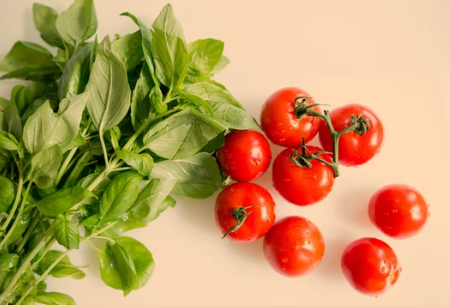
If you’re a fan of tomatoes, consider planting them alongside basil. These two plants are not only culinary companions but also excellent garden partners.
Basil enhances the flavor of tomatoes when used together in recipes, but it also serves as a natural pest repellent.
Its strong aroma helps repel pests like aphids and whiteflies, reducing the risk of infestation.
Planting basil around your tomato plants can promote healthier growth and reduce the need for chemical insecticides.
Carrots and Onions
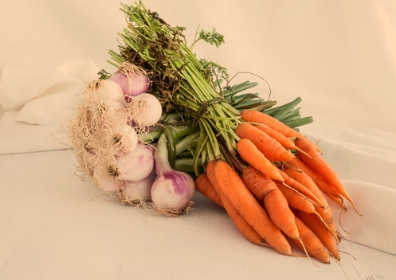
Carrots and onions make another fantastic duo in the garden. While carrots grow underground, onions grow above ground, creating an efficient use of space.
The pungent smell of onions acts as a natural deterrent to pests that harm carrots, such as carrot flies. By interplanting these two root vegetables, you not only save space but also protect your carrots from potential pest damage.
Pest Control Partnerships
One of the significant advantages of companion planting is its ability to naturally manage pests. Here are a couple of examples:
Marigolds and Cabbage
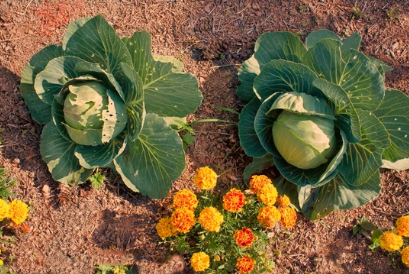
Marigolds, with their vibrant colors, are not only a visual delight but also a valuable companion for cabbage.
These cheerful flowers emit a scent that repels pests like aphids, nematodes, and cabbage worms. By planting marigolds around your cabbage plants, you create a natural barrier against these unwanted invaders.
Also, marigolds attract beneficial insects like ladybugs and hoverflies, which prey on harmful pests, thus creating a balanced ecosystem in your garden.
Cucumbers and Radishes
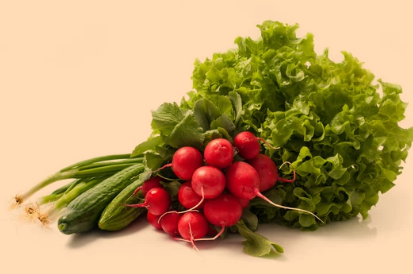
If you’re growing cucumbers, consider interplanting them with radishes. Cucumber beetles are a common pest that can damage cucumber plants.
However, radishes act as a trap crop for these beetles. By planting radishes between your cucumber rows, you lure the beetles away from the cucumber plants, protecting them from potential damage.
Radishes serve as sacrificial plants, diverting the attention of pests and minimizing the need for chemical interventions.
Soil Health and Nutrient Combinations
Companion planting can play a vital role in maintaining soil health and optimizing nutrient availability. Consider these combinations:
Legumes and Brassicas
Legumes, such as peas and beans, have a remarkable ability to fix nitrogen from the atmosphere and convert it into a usable form for plants.
This nitrogen-fixing characteristic makes them excellent companions for nitrogen-hungry plants like cabbage and broccoli.
When interplanting legumes with brassicas, you enrich the soil with nitrogen, providing a natural and sustainable fertilizer source.
This reduces the need for synthetic nitrogen-based fertilizers while promoting healthier growth in your garden.
Leafy Greens and Root Vegetables
Leafy greens, such as lettuce and spinach, thrive in cooler conditions, while root vegetables, like carrots and radishes, prefer some shade to avoid excessive heat.
When planting leafy greens alongside root vegetables, you create a beneficial microclimate for the latter.
The shade provided by the leafy greens helps regulate the soil temperature, preventing it from becoming too hot for the root vegetables.
This harmonious combination results in improved growth and healthier root development.
General Guidelines for Successful Companion Planting
To ensure successful companion planting, consider the following guidelines:
Proper Spacing
Allow enough space between companion plants to avoid overcrowding, which can lead to competition for resources and hinder growth.
Avoid Plant Competition
Some plants, especially those with extensive root systems, may compete for nutrients or water. Be mindful of their growth habits and provide adequate spacing or physical barriers, if necessary.
Plant Height Considerations
Consider the height of companion plants and their potential to shade or overshadow others. Taller plants should be positioned to avoid blocking sunlight from shorter ones.
Rotate Crops
To prevent the buildup of pests or diseases, practice crop rotation by changing the location of companion plants each growing season.
Keep Records
Maintain a garden journal to track the success and challenges of different companion planting combinations. This will help you refine your strategies in subsequent seasons.
Conclusion
Companion planting is a fascinating technique that not only improves your garden’s productivity but also fosters a sustainable and eco-friendly approach to gardening.
With the principles of companion planting and exploring various vegetable combinations, you can create a harmonious and balanced ecosystem in your garden.
Whether it’s interplanting corn, beans, and squash or harnessing the pest-repellent properties of marigolds and basil, companion planting opens up a world of possibilities.
So, don’t be afraid to experiment and discover the magical synergy that lies within your vegetable garden. Happy planting!

